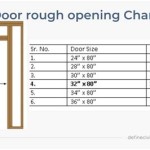What Is Interior Architecture and Design Course?
The field of interior architecture and design is a multifaceted discipline that combines the functional aspects of building design with the aesthetic considerations of interior styling. An interior architecture and design course aims to equip students with the knowledge and skills necessary to create spaces that are not only visually appealing but also structurally sound, functionally efficient, and conducive to the well-being of the occupants.
Understanding the nuances of this course requires exploring its various components, from the foundational principles of design to the technical aspects of construction and building systems. It's a curriculum that prepares individuals for a career where creativity meets practicality, and where artistic vision is tempered by the constraints of building codes and client needs.
Core Principles of Design and Aesthetics
A significant portion of any interior architecture and design course is dedicated to the study of design principles. These principles serve as the bedrock upon which all design decisions are made. Students learn to manipulate elements such as space, line, form, light, color, texture, and pattern to achieve specific aesthetic and functional goals. Lessons involve understanding how these elements interact and how they can be combined to create a harmonious and balanced environment.
Color theory is a critical component, exploring the psychological effects of different colors and color combinations, and how they can be used to evoke particular moods or support specific activities within a space. Similarly, the study of lighting design involves understanding how natural and artificial light can be used to enhance the visual appeal of a space, improve functionality, and contribute to energy efficiency. Consideration is also given to the impact of acoustics, ensuring optimal sound quality within the designed environment.
Further, students are exposed to various design styles and movements throughout history, from classical architecture to contemporary design trends. This historical context provides a foundation for understanding the evolution of design and helps students develop their own personal design aesthetic. They learn to analyze existing spaces, identify the elements that contribute to their success or failure, and apply these lessons to their own designs.
The course also emphasizes the importance of understanding the end-user. Effective design is not just about aesthetics; it is about creating spaces that meet the needs and preferences of the people who will be using them. This requires strong communication skills and the ability to gather information, conduct research, and translate client requirements into actionable design plans.
Technical Knowledge and Building Systems
Beyond the artistic and aesthetic elements, a comprehensive interior architecture and design course delves into the technical aspects of construction and building systems. This includes a thorough understanding of building codes, safety regulations, and accessibility standards. Students learn to read and interpret architectural drawings, structural plans, and mechanical and electrical schematics.
Knowledge of building materials and construction methods is essential. Students study the properties of various materials, such as wood, concrete, steel, glass, and sustainable alternatives, and learn how they are used in construction. They also gain an understanding of construction processes, from site preparation to finishing details. This knowledge allows them to make informed decisions about material selection, construction techniques, and detailing. It also allows them to effectively communicate with contractors and other professionals involved in the building process.
The integration of building systems, such as HVAC (heating, ventilation, and air conditioning), plumbing, and electrical systems, is another key area of study. Students learn how these systems work, how they are integrated into the building structure, and how they can be designed to optimize energy efficiency and occupant comfort. This understanding allows them to collaborate effectively with engineers and other specialists to ensure that the design is technically sound and meets all applicable codes and regulations.
Furthermore, students are trained in Computer-Aided Design (CAD) and Building Information Modeling (BIM) software. These tools are essential for creating accurate and detailed drawings, 3D models, and virtual walkthroughs of proposed designs. Proficiency in these technologies allows students to communicate their design ideas effectively and to collaborate with other professionals involved in the project.
Sustainable Design and Environmental Considerations
In today’s world, sustainability is a critical consideration in all aspects of design and construction. An interior architecture and design course must incorporate the principles of sustainable design, emphasizing the importance of minimizing environmental impact and creating healthy and energy-efficient spaces. This includes understanding the life cycle of building materials, from extraction and manufacture to transportation and disposal. Students learn to select materials that are renewable, recycled, and locally sourced, reducing the carbon footprint of the project.
Energy efficiency is another key focus. Students learn about passive design strategies, such as orientation, shading, and natural ventilation, which can reduce the need for mechanical heating and cooling. They also study the principles of energy-efficient lighting and appliance selection. The course covers the importance of water conservation which includes selecting water-efficient fixtures and appliances, and designing landscapes that require minimal irrigation.
Indoor environmental quality is also a critical aspect of sustainable design. Students learn about the impact of building materials and finishes on indoor air quality and how to select products that are low in volatile organic compounds (VOCs). They also study the principles of ventilation and air filtration to ensure that indoor spaces are healthy and comfortable for occupants. The use of natural light and views can also significantly improve indoor environmental quality, promoting well-being and productivity.
The LEED (Leadership in Energy and Environmental Design) rating system is often incorporated into the curriculum, providing students with a framework for assessing the sustainability performance of buildings and interiors. This can prepare them for pursuing LEED accreditation and incorporating sustainable design principles into their professional practice. Understanding the principles of biophilic design, which seeks to connect occupants with nature, is also becoming increasingly important in creating healthy and sustainable environments.
Finally, a comprehensive course will address the broader environmental and social impacts of design decisions. This includes considering the impact on local communities, promoting social equity, and supporting responsible sourcing practices. The goal is to instill in students a sense of environmental stewardship and a commitment to creating designs that are not only aesthetically pleasing and functional but also environmentally responsible and socially beneficial.
In summary, an interior architecture and design course offers a blend of artistic expression, technical acumen, and environmental consciousness. It equips individuals with the diverse skill set needed to shape the built environment responsibly and creatively.

Should I Study Interior Design Or Architecture The Architects Diary

Diploma In Interior Architecture Design Transform Spaces Lives

Interior Architecture And Design Ba Degree London Metropolitan University

Interior Architecture And Design With A Foundation Year Ba Hons 2025 26 Entry Birmingham City University

Interior Design Vs Architecture Career Path Guide

Csu S Interior Architecture And Design Program Accreditation Renewed By The Council For College Of Health Human Sciences

Crescent School Of Architecture

Interior Architecture Ba Hons

World University Of Design Best Institute In Delhi Architecture Textile Fashion Designing Course Sonipat Ncr Ha

Interior Design Course Principles Practices And Techniques For The Aspiring Designer Paperback Mcnally Jackson Books
Related Posts








